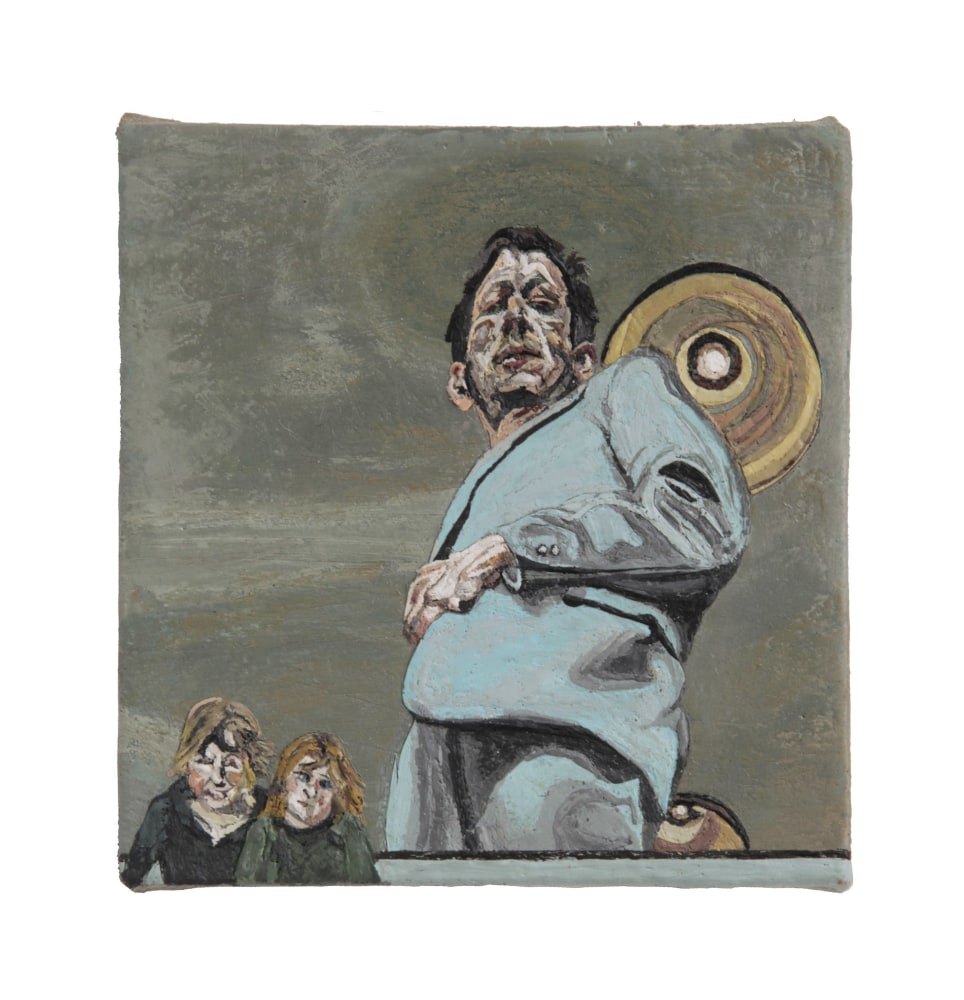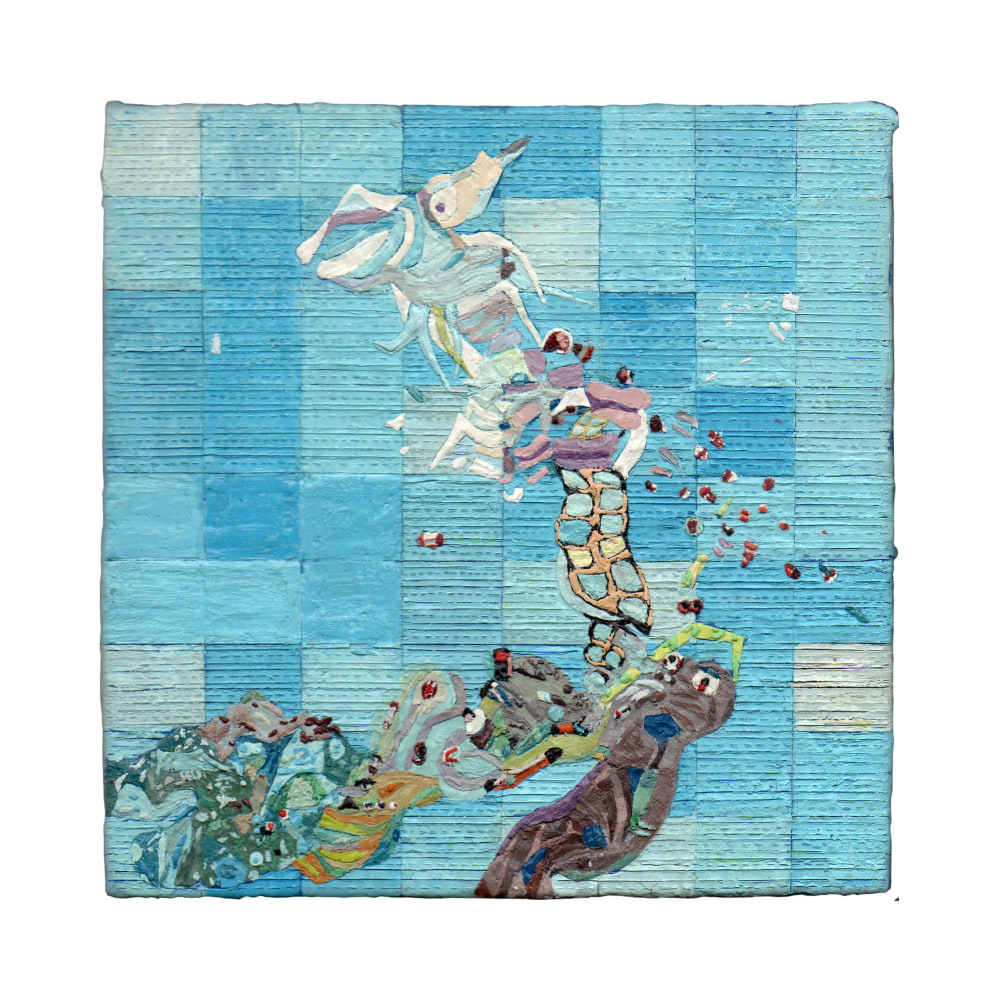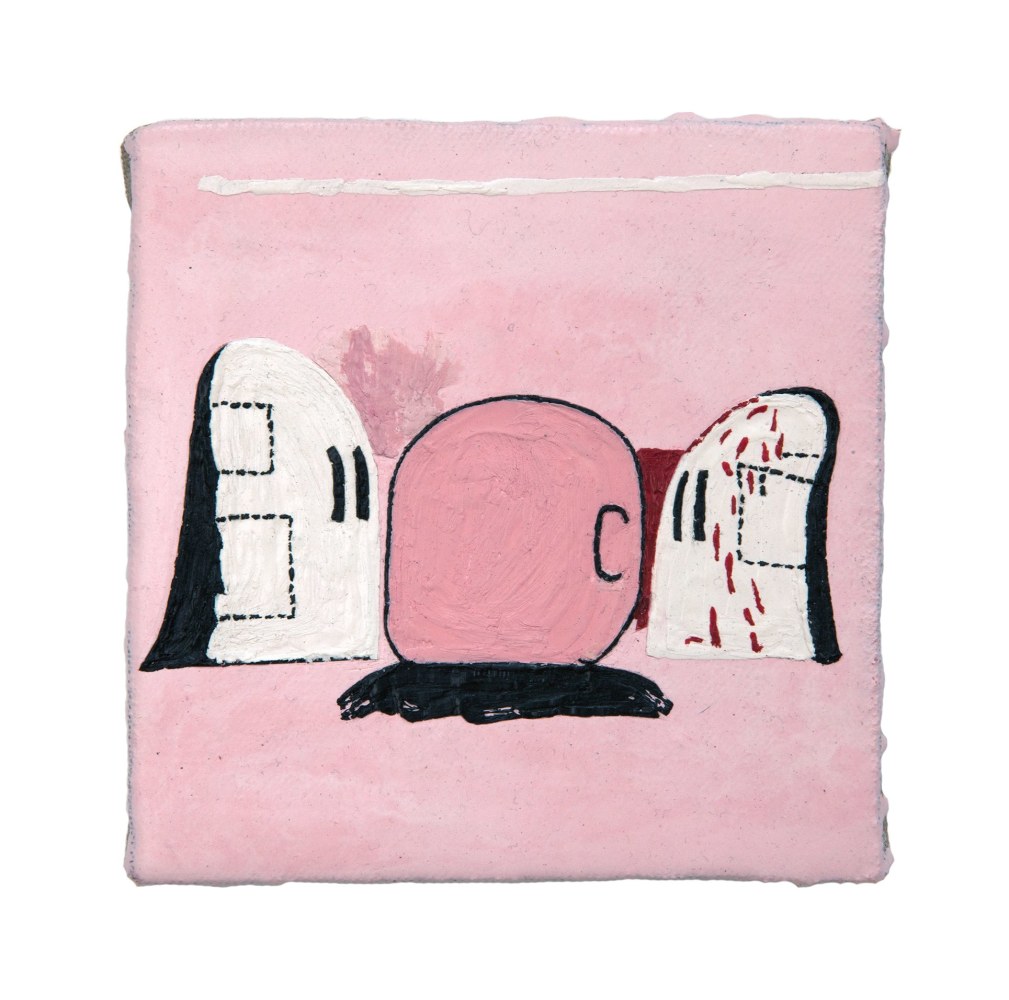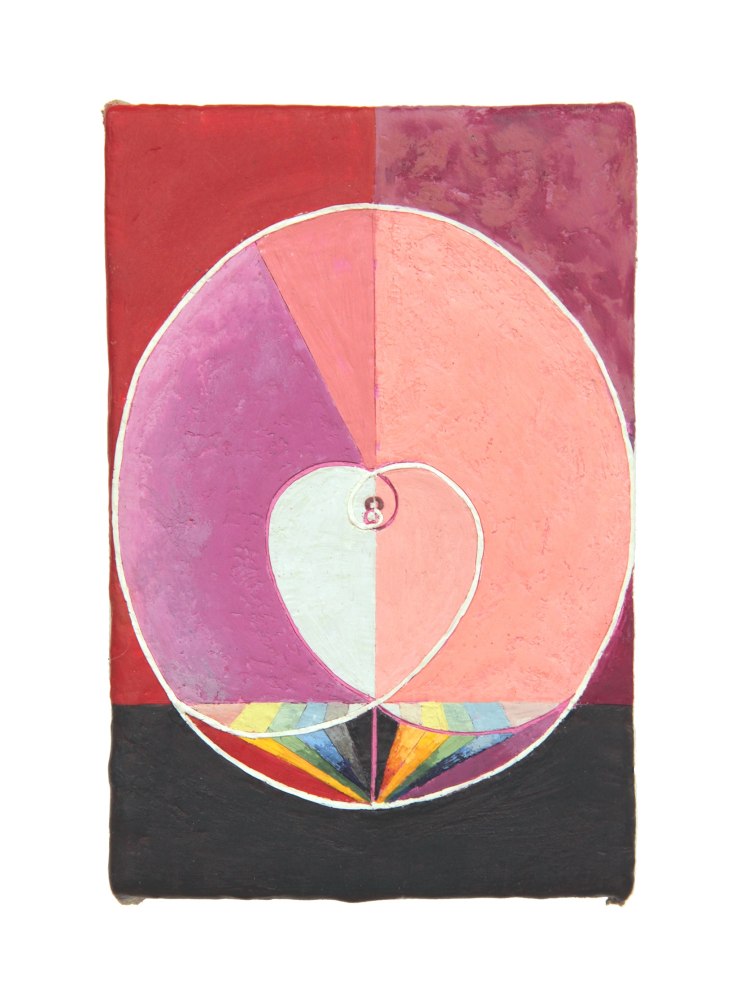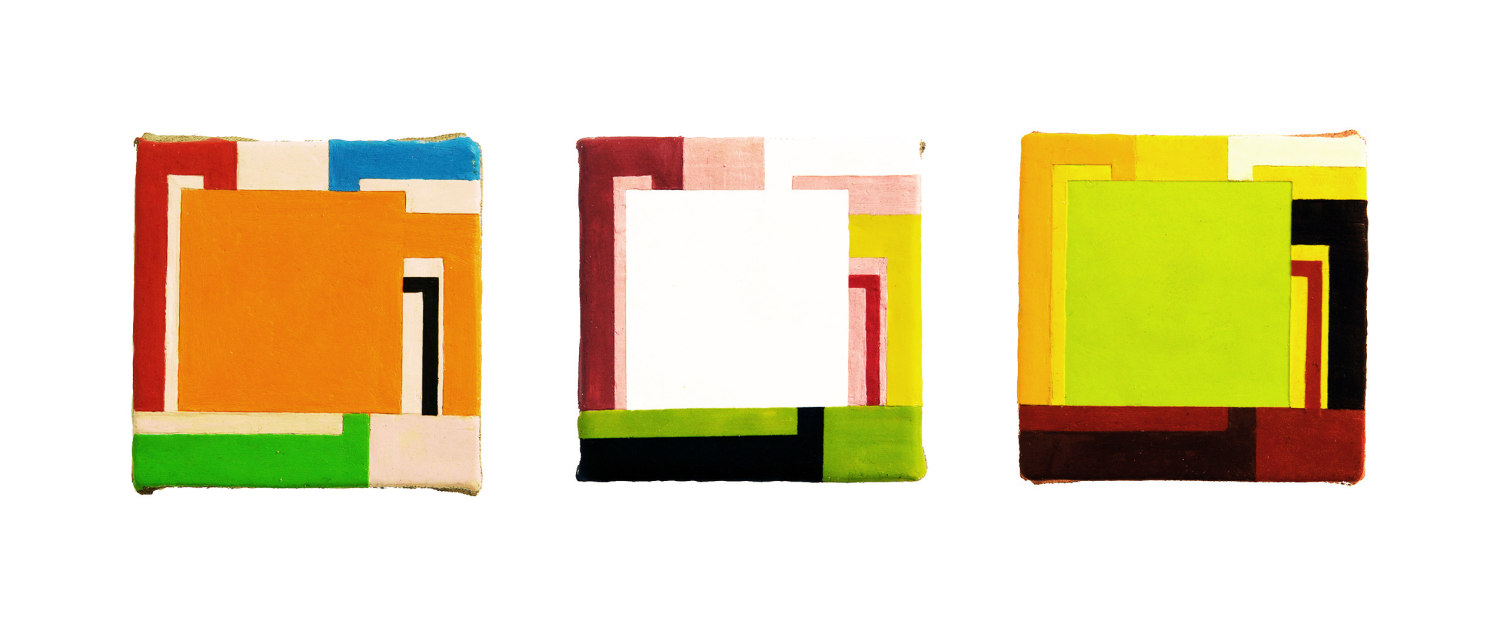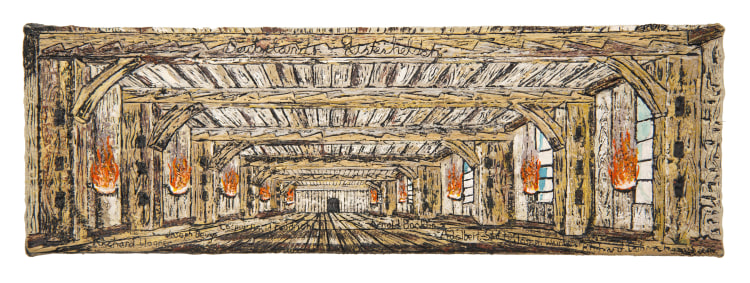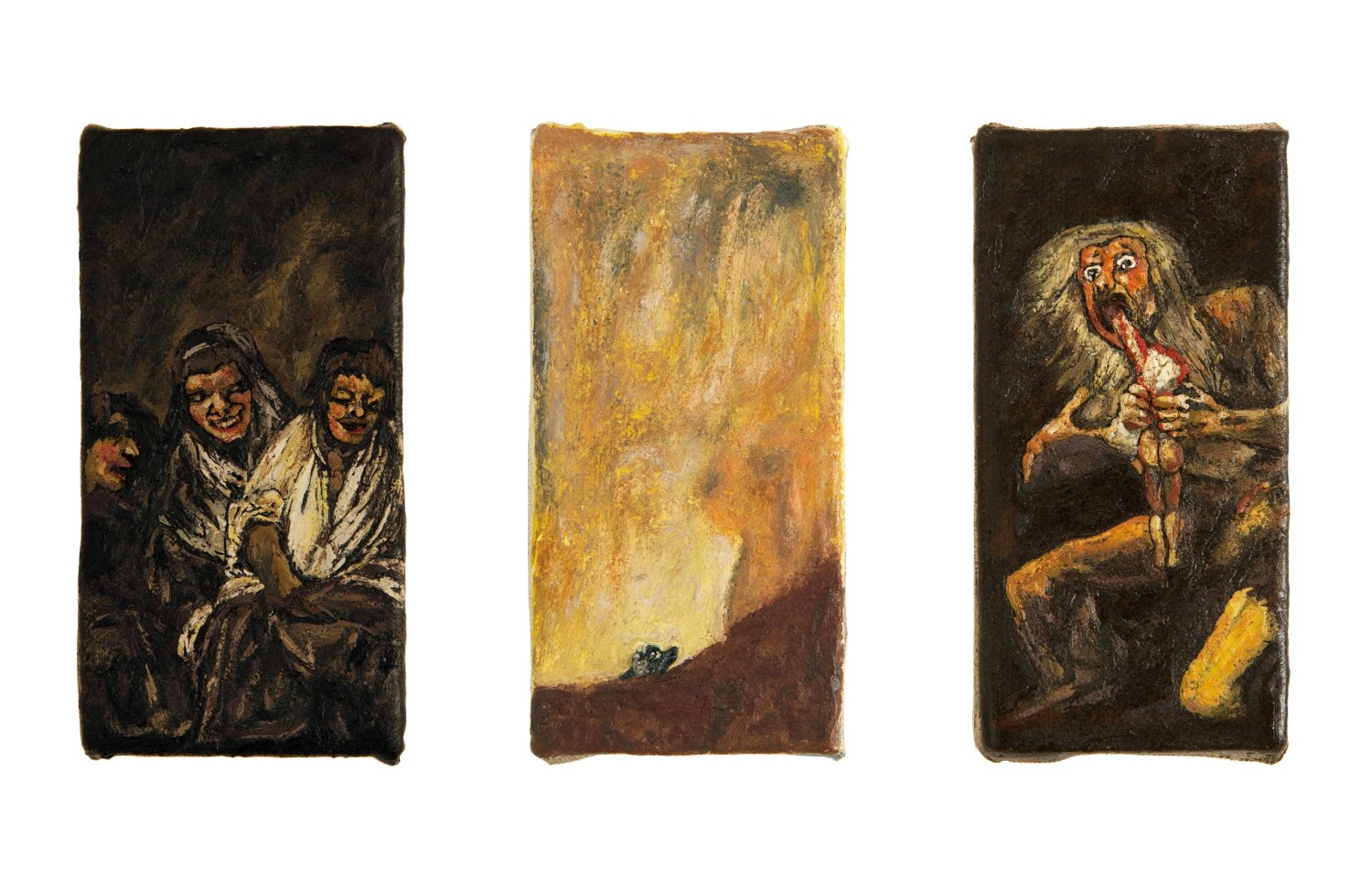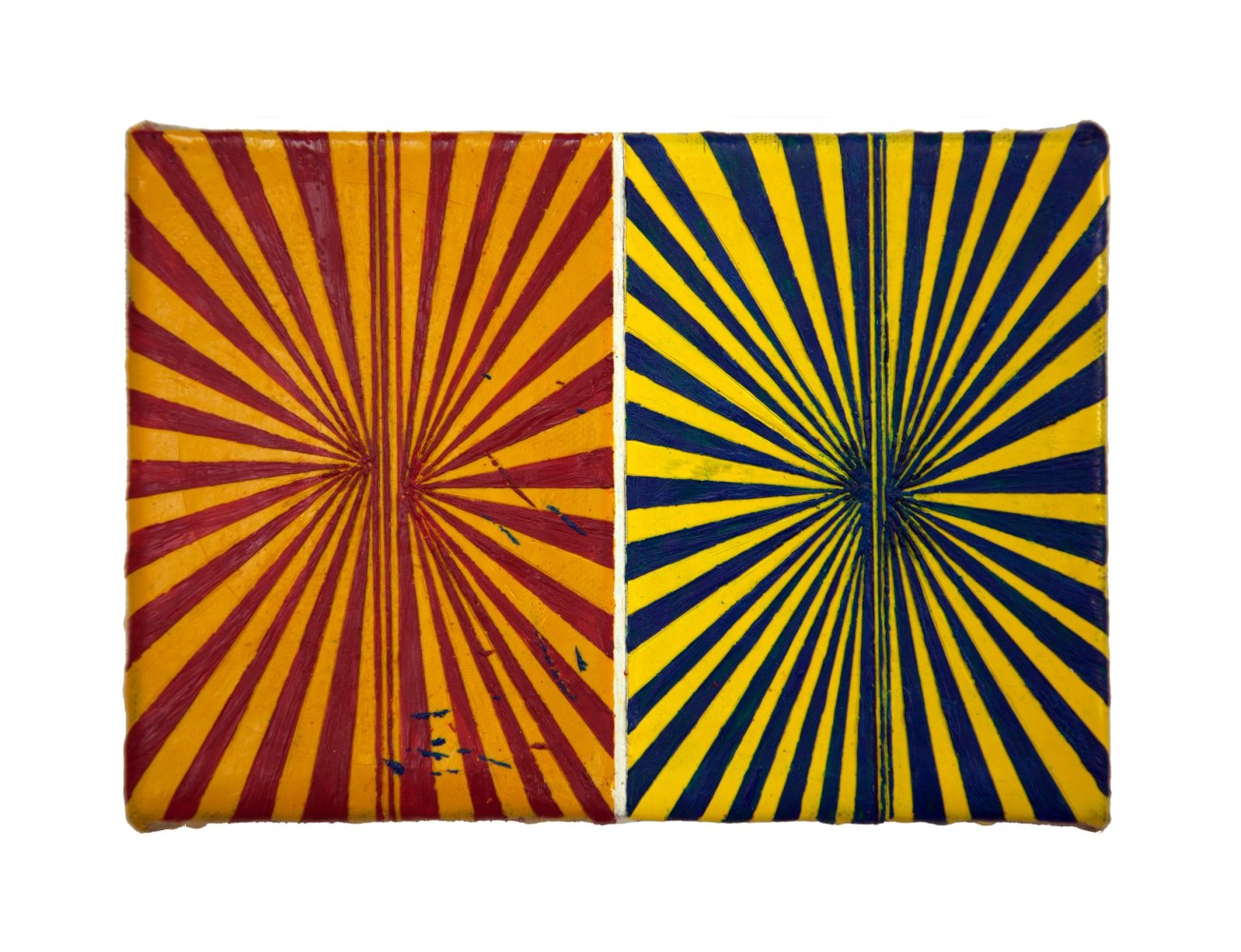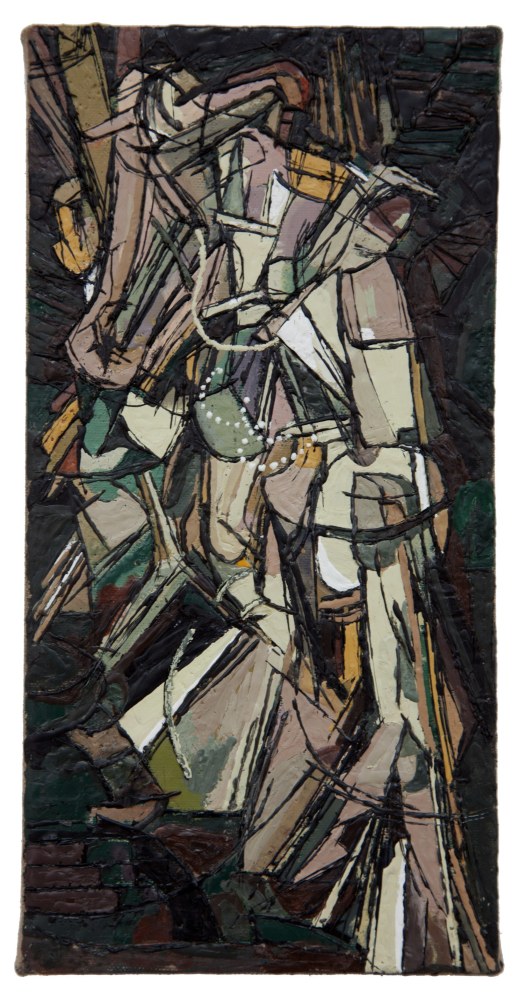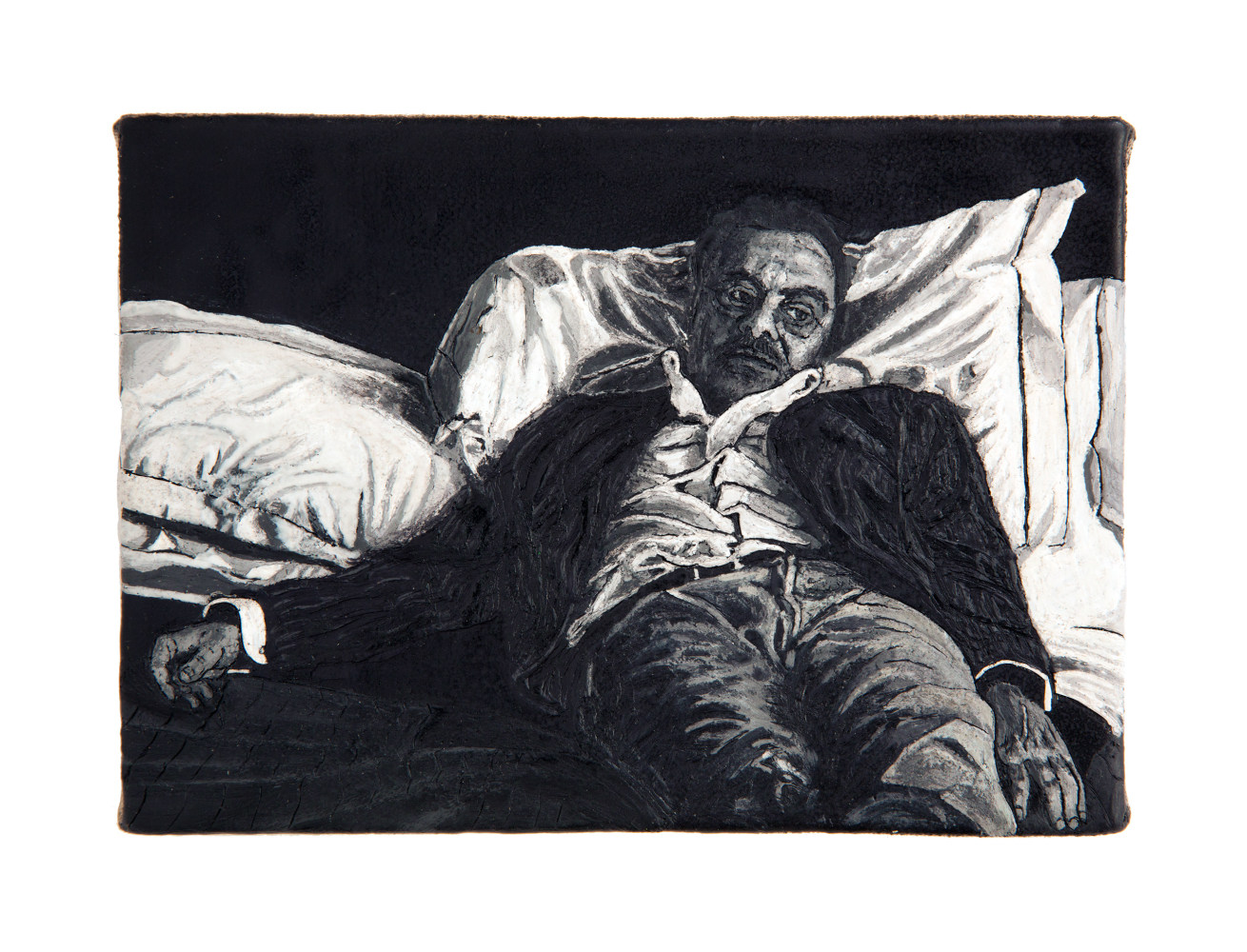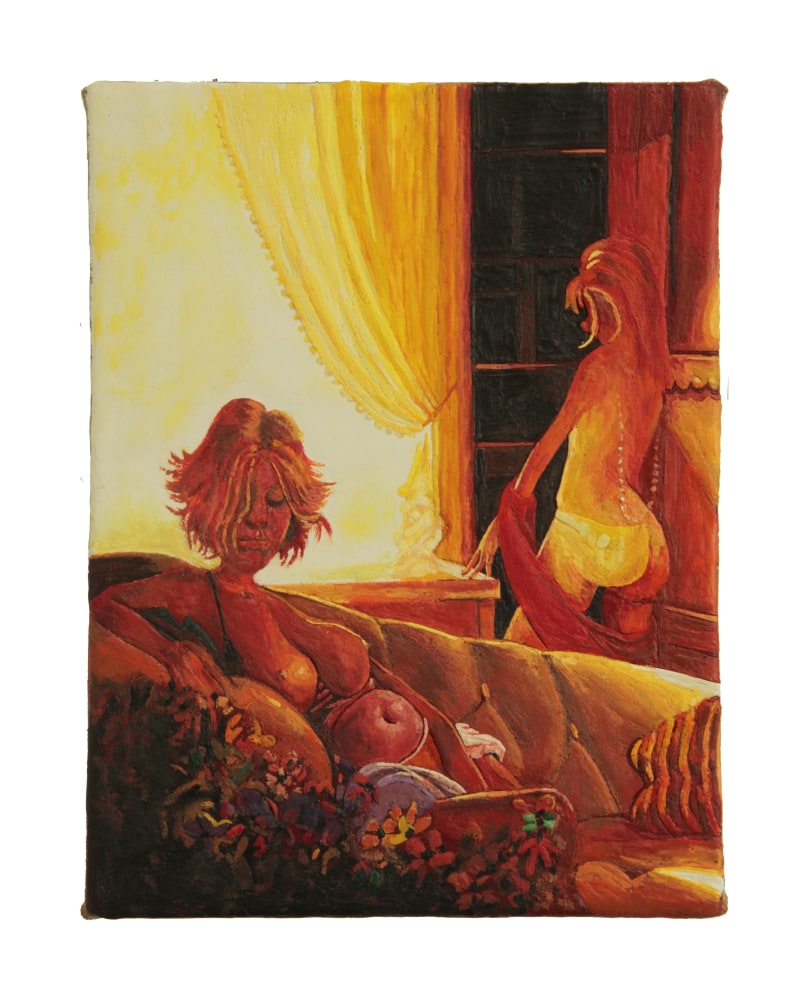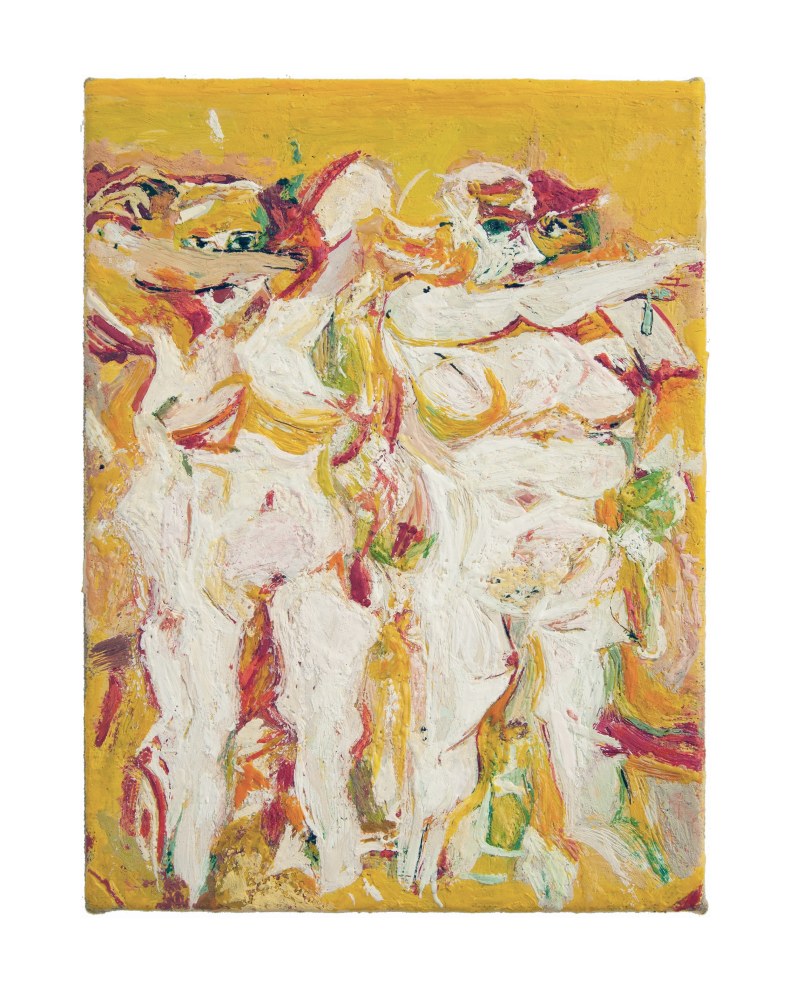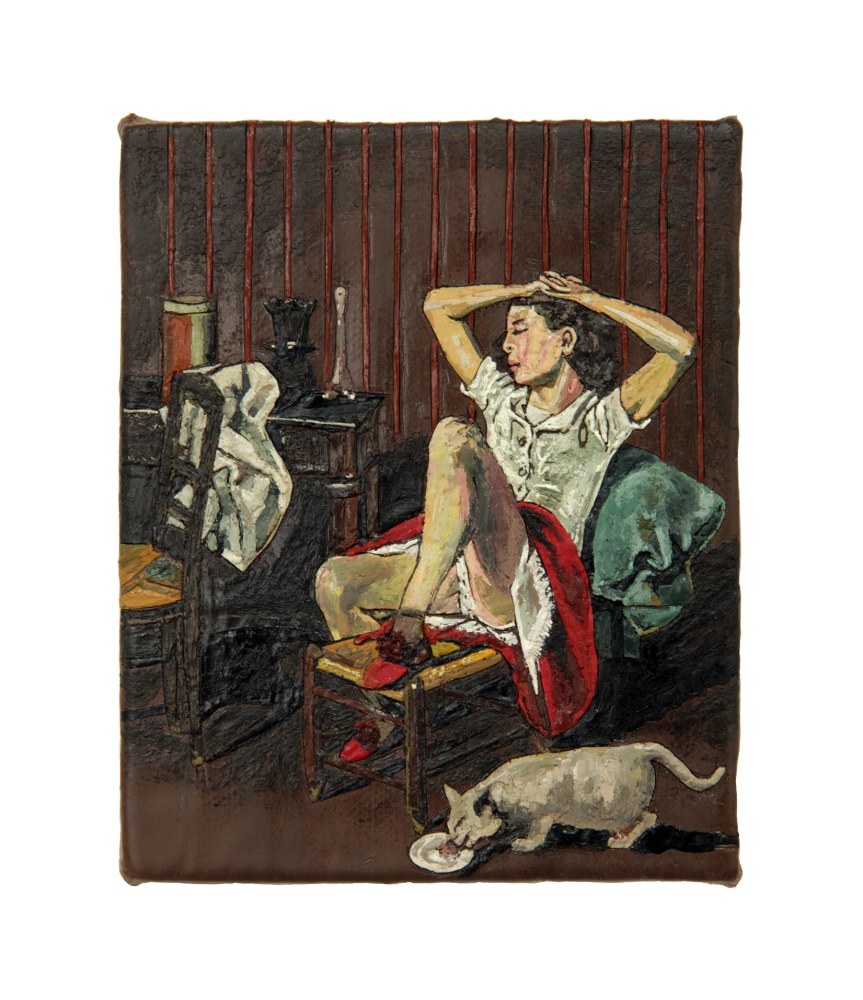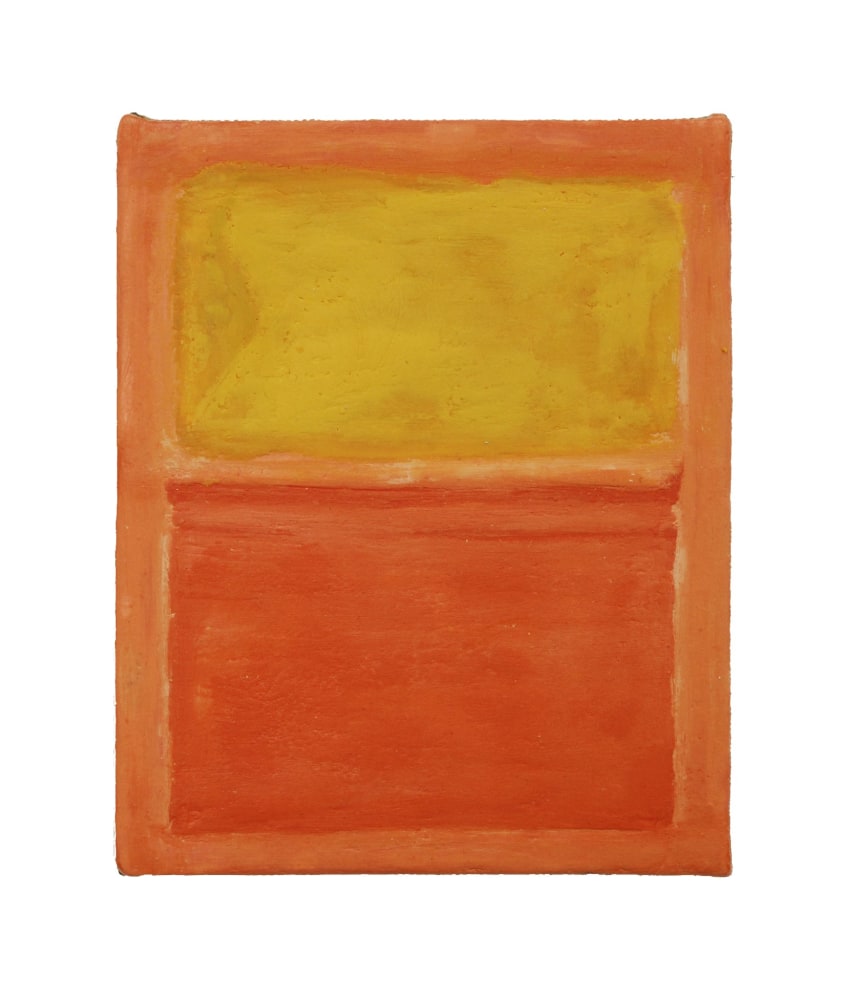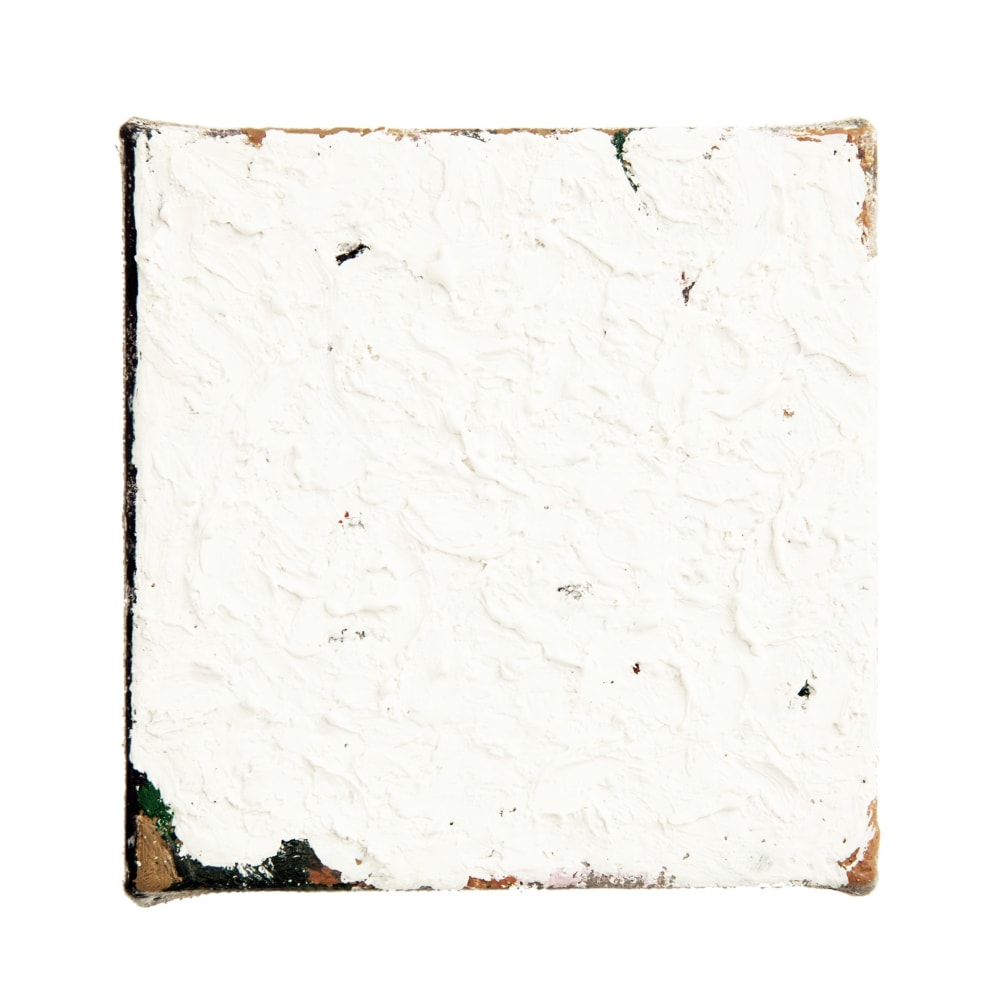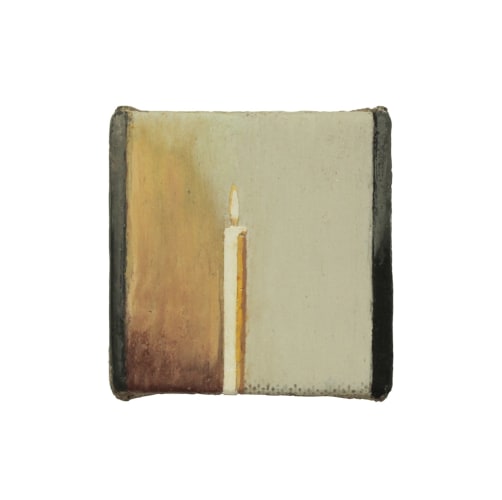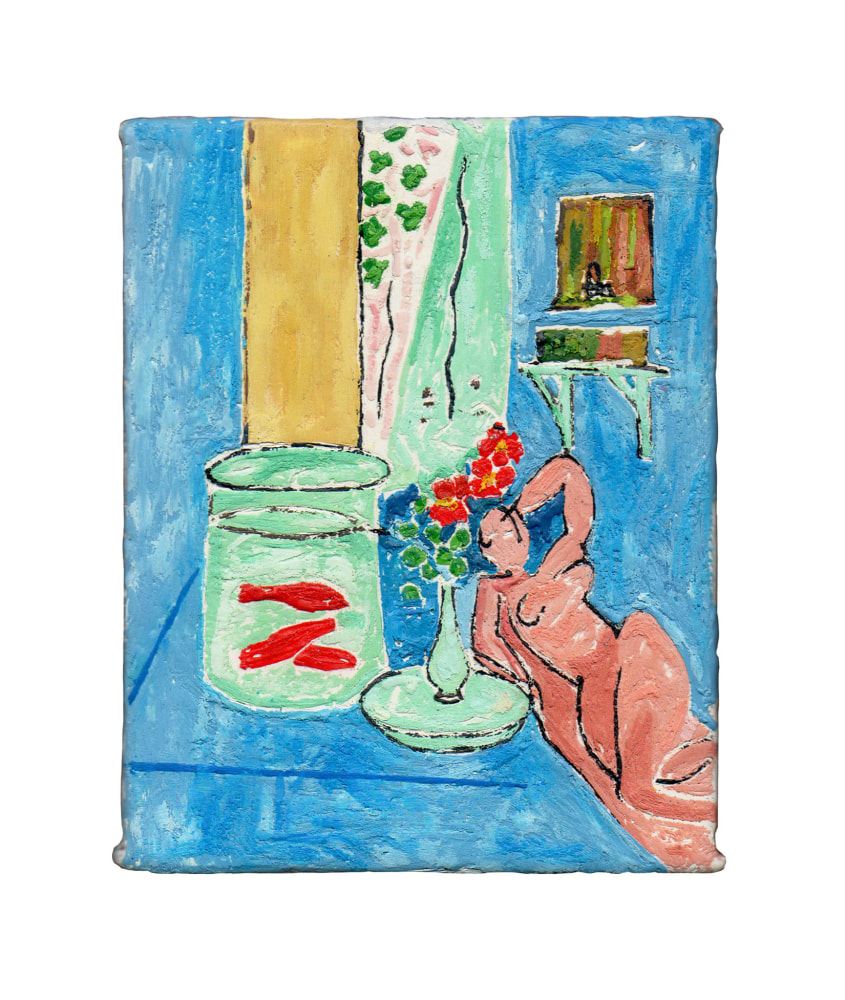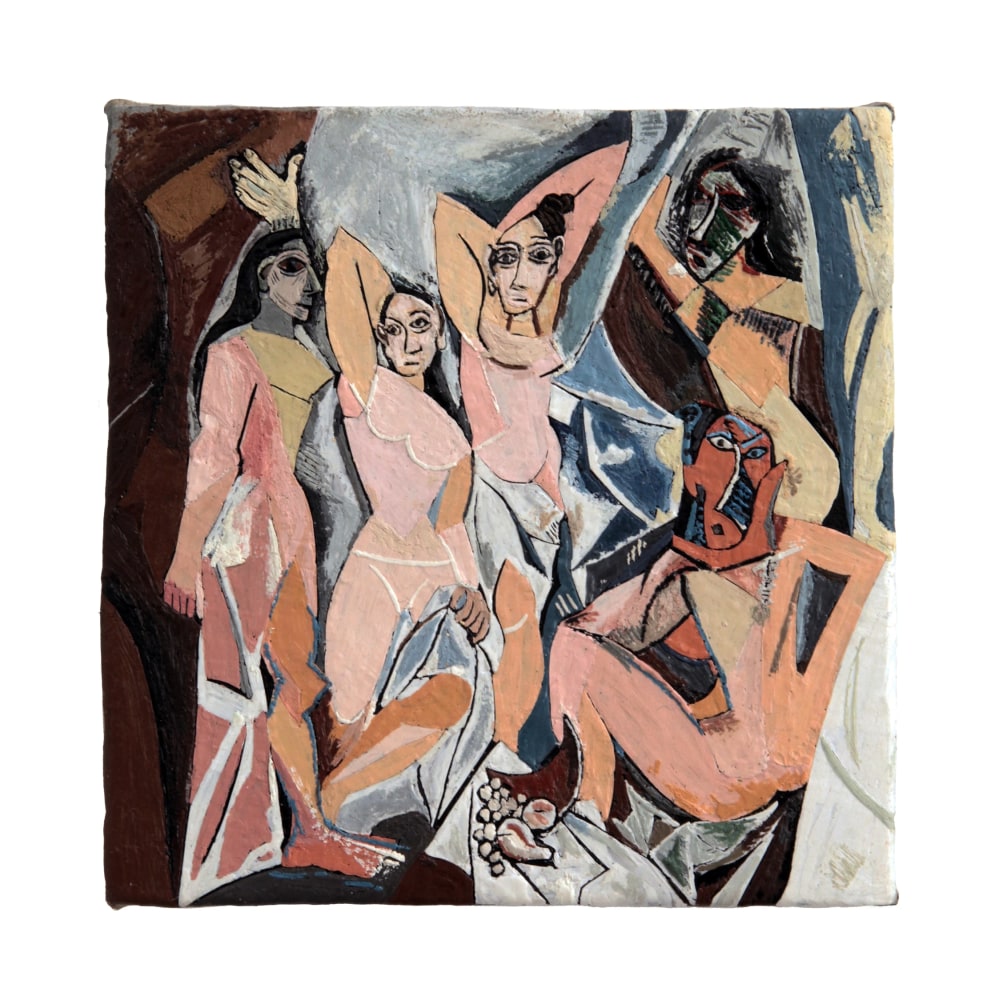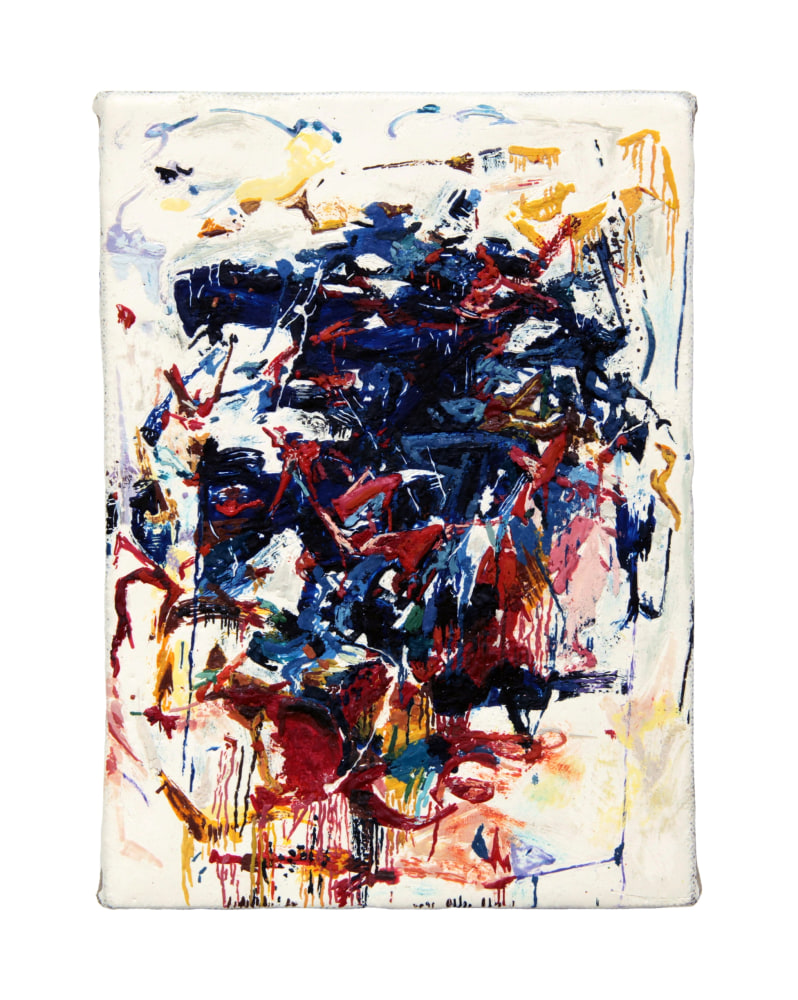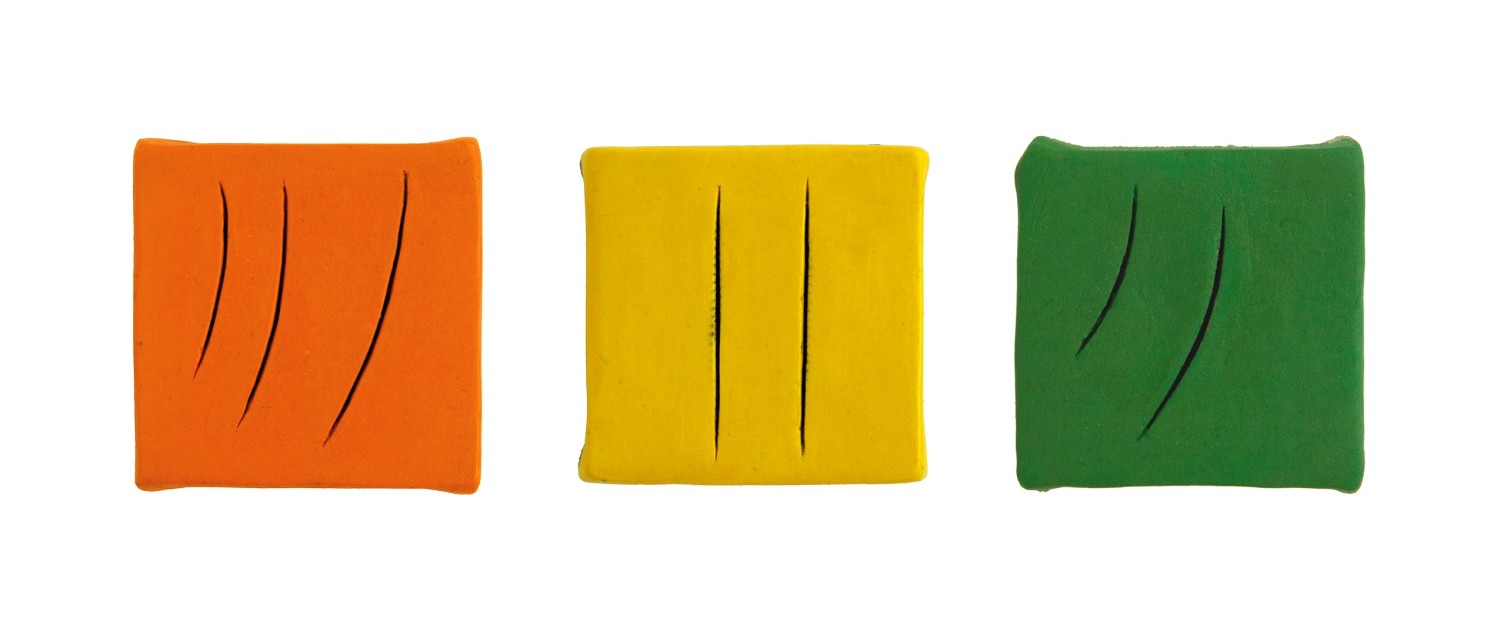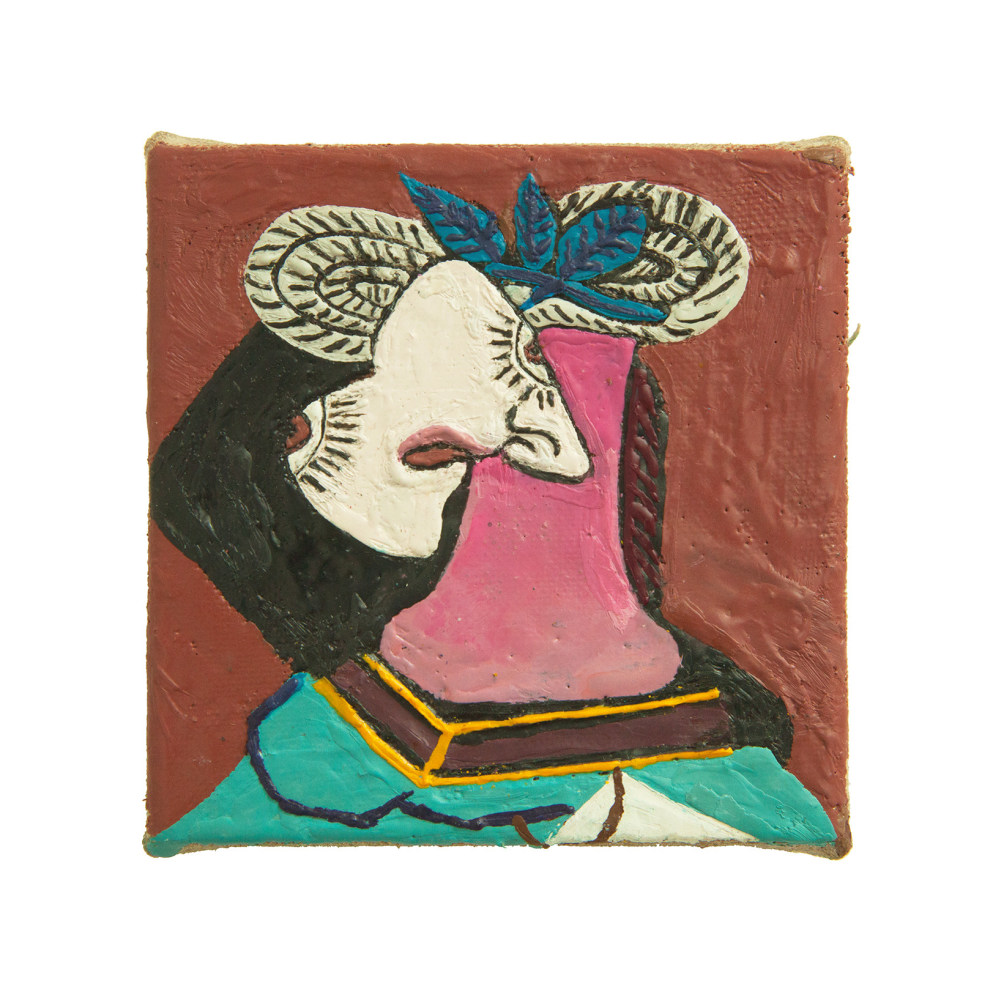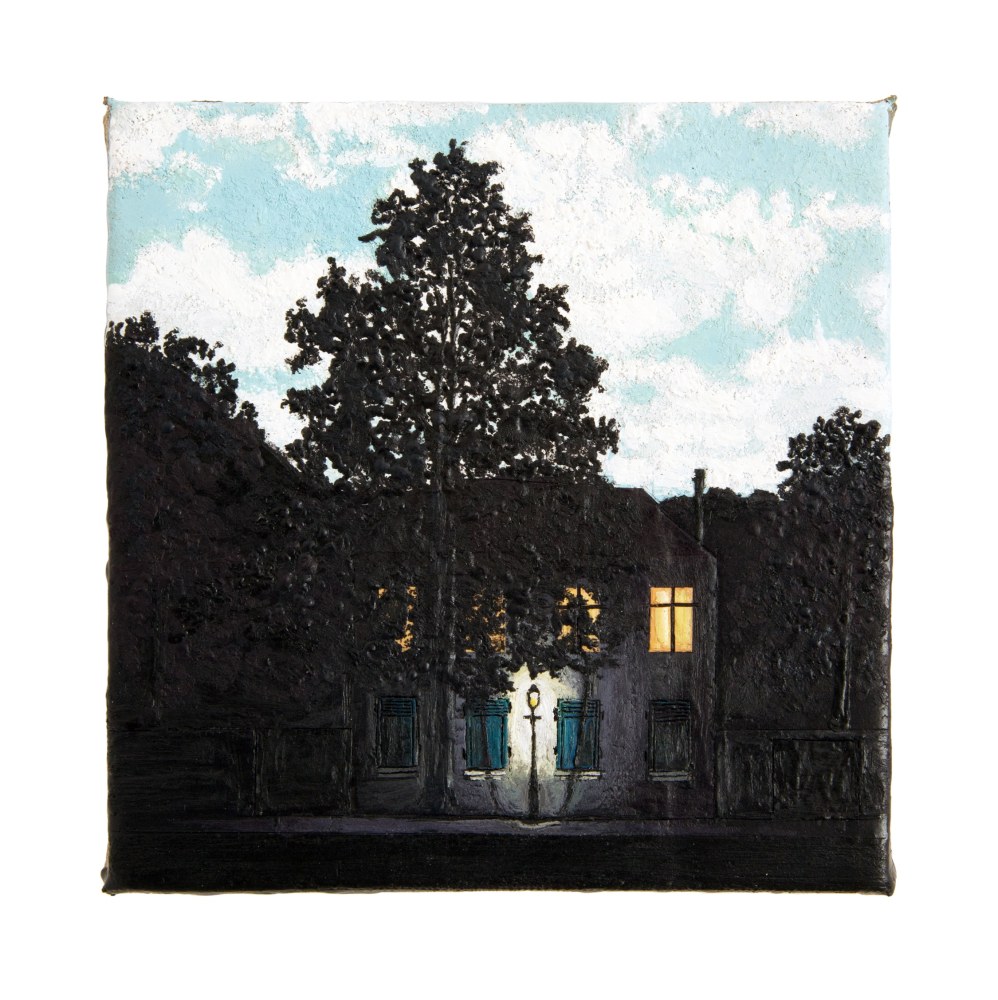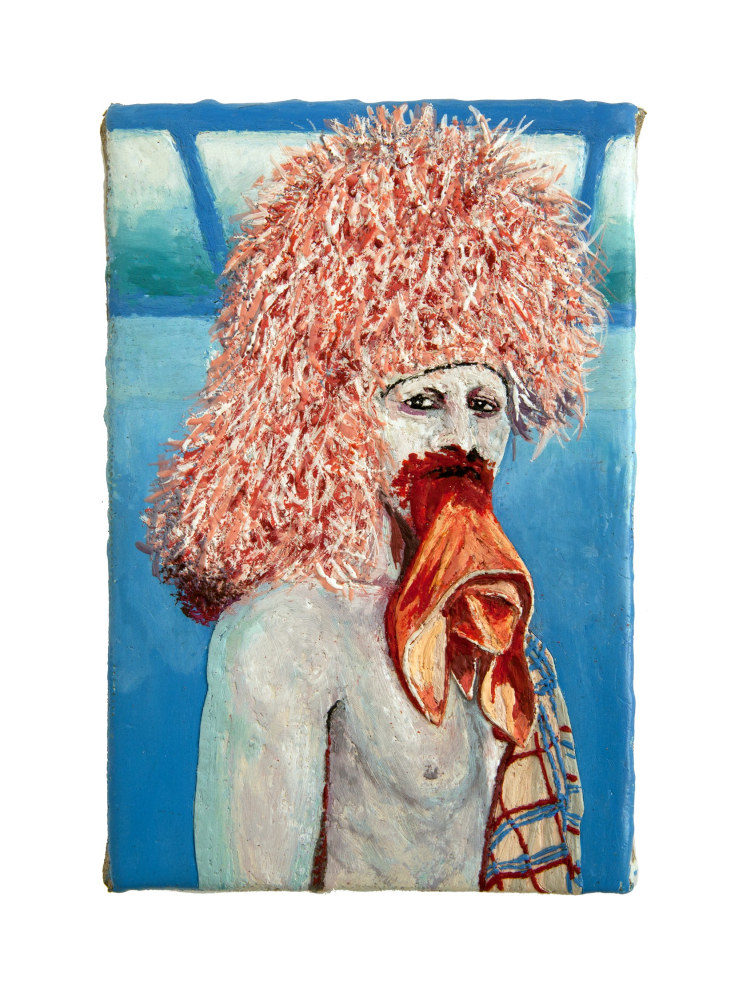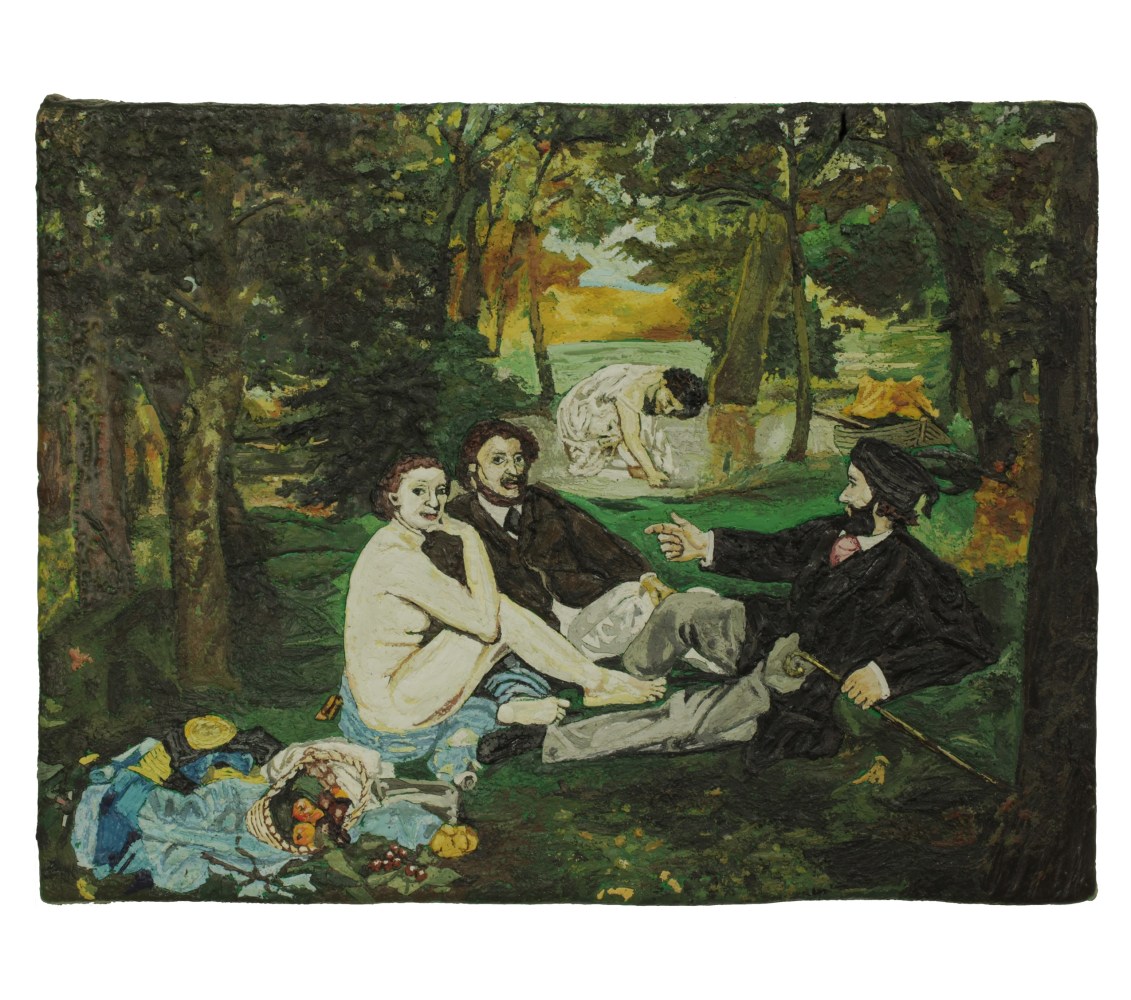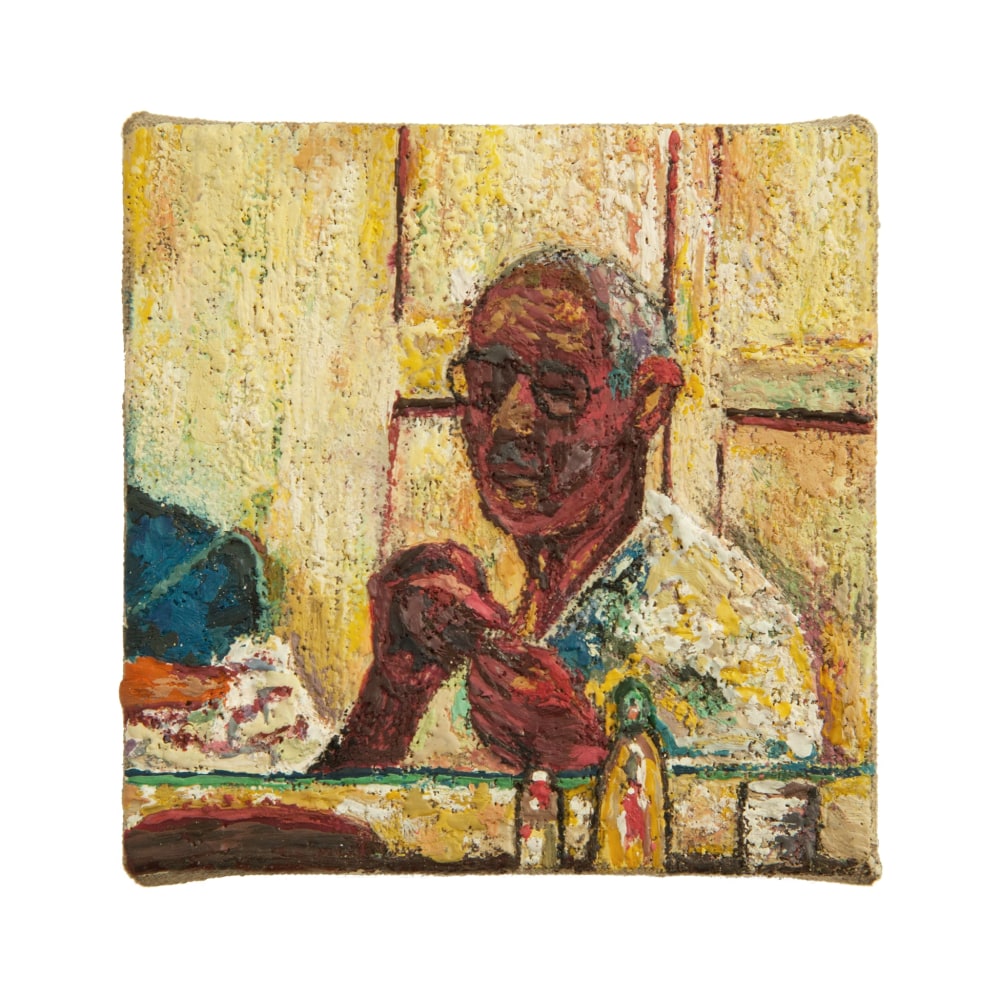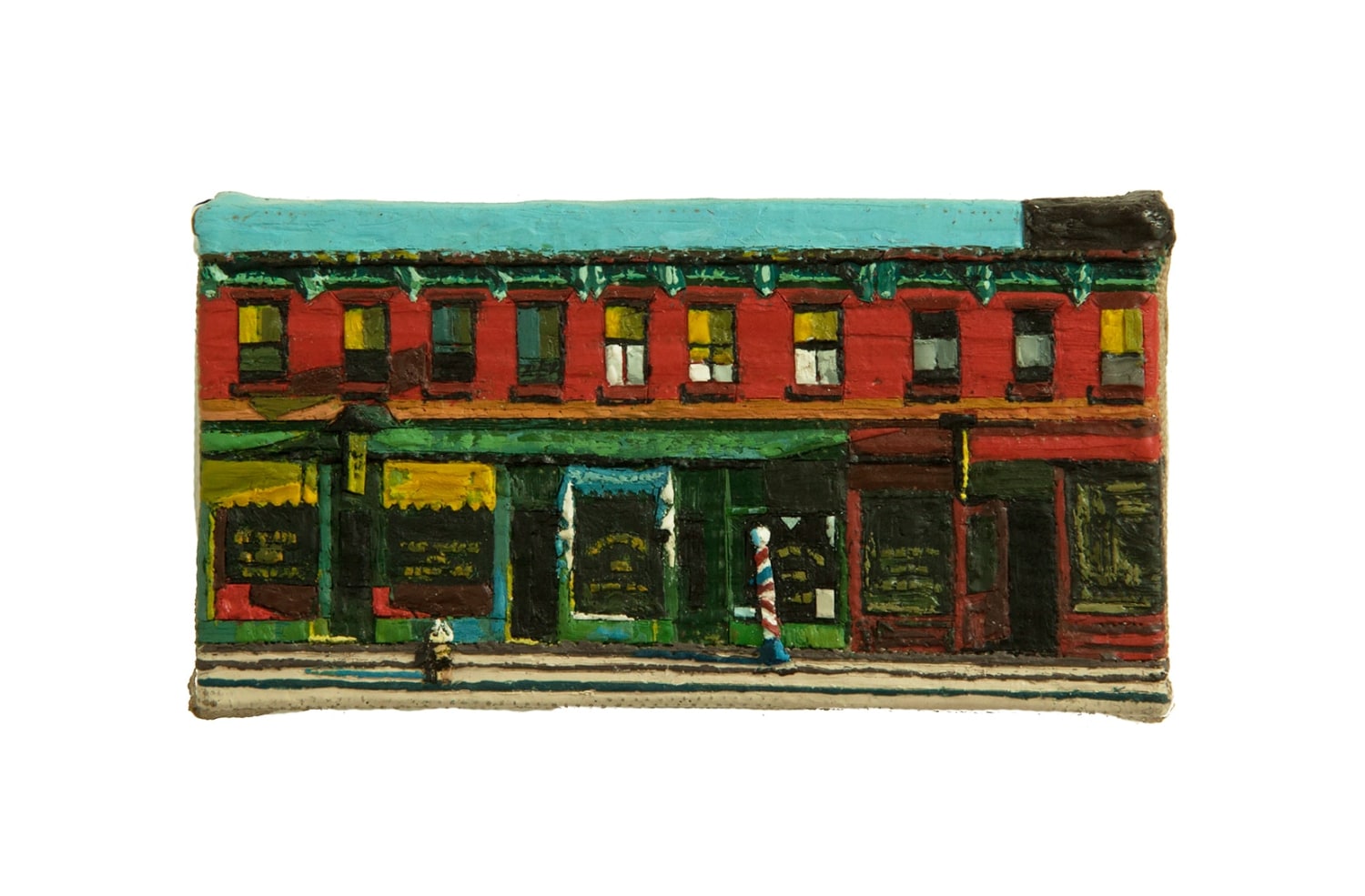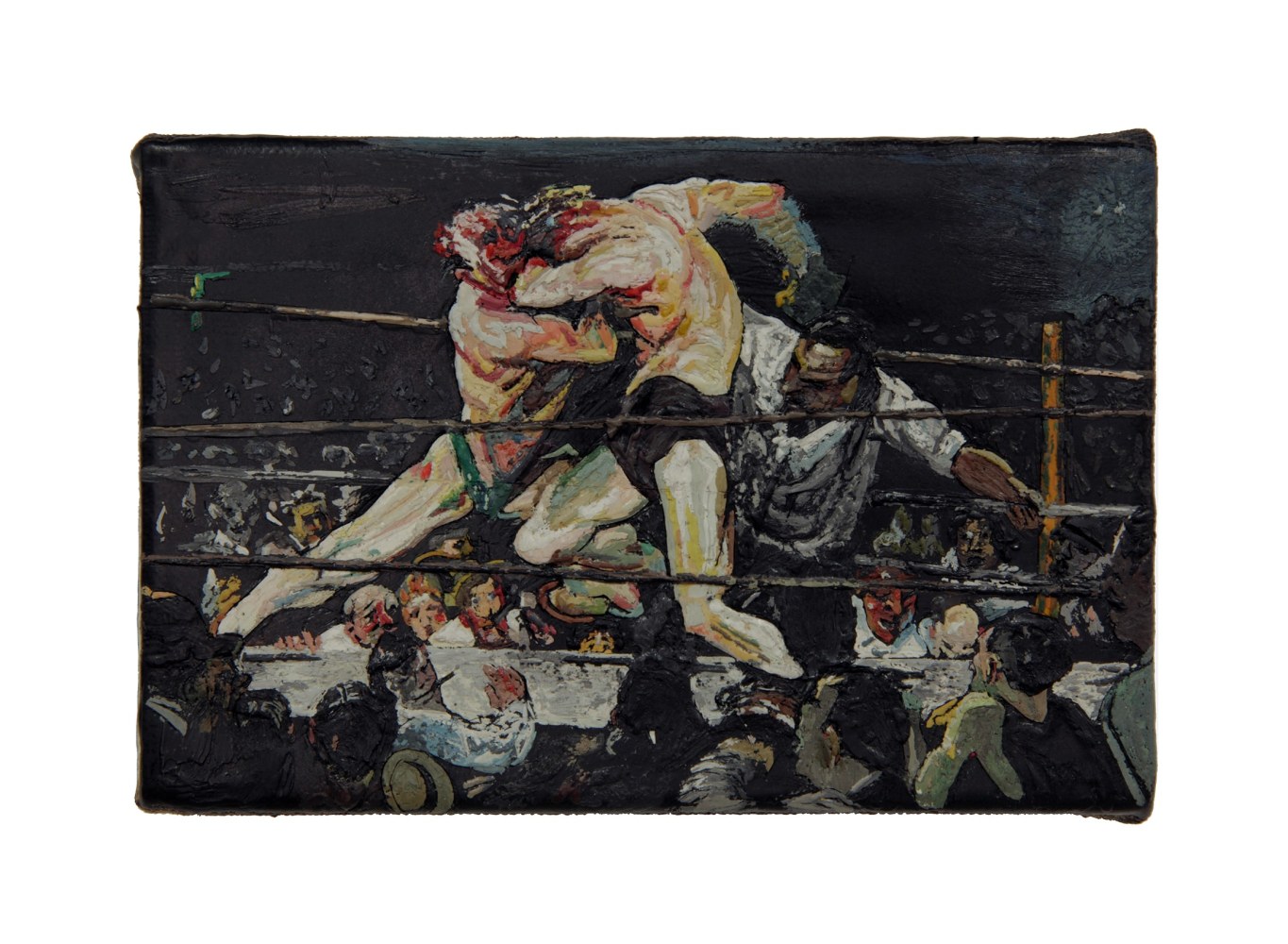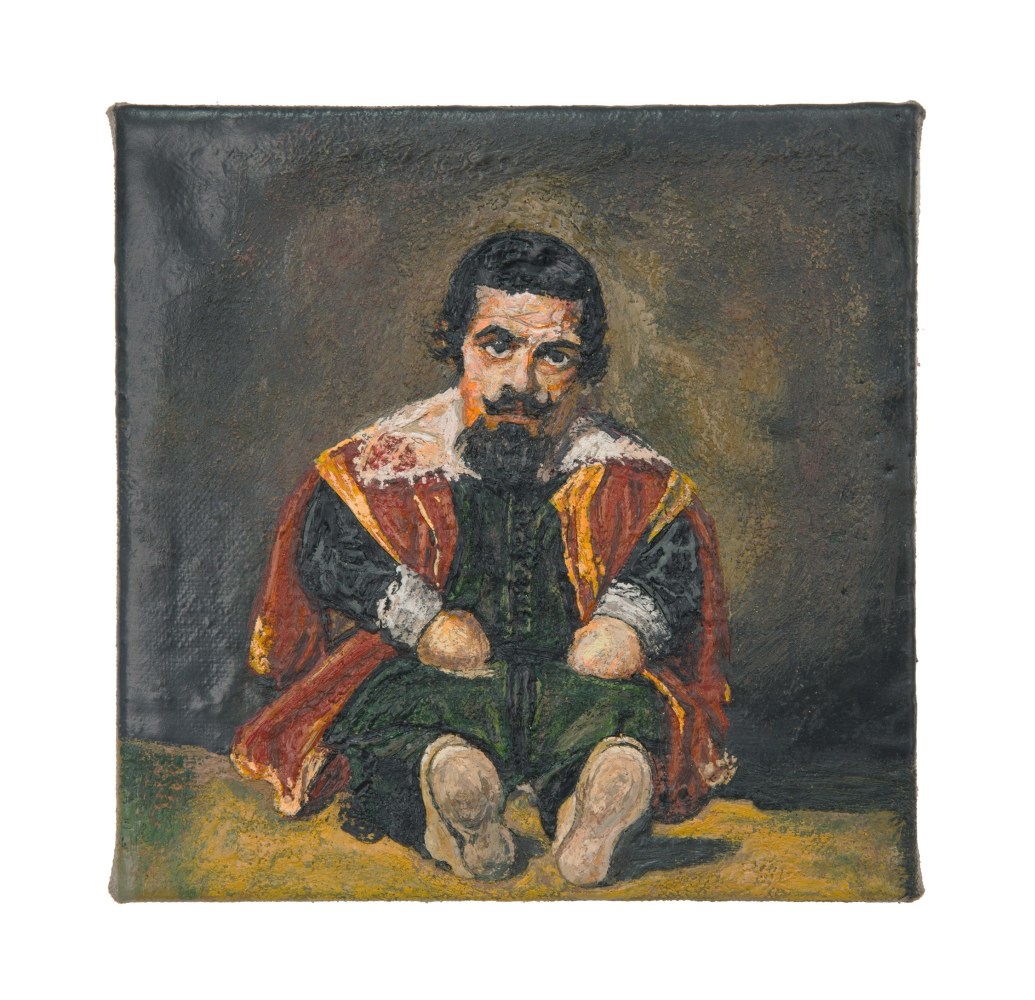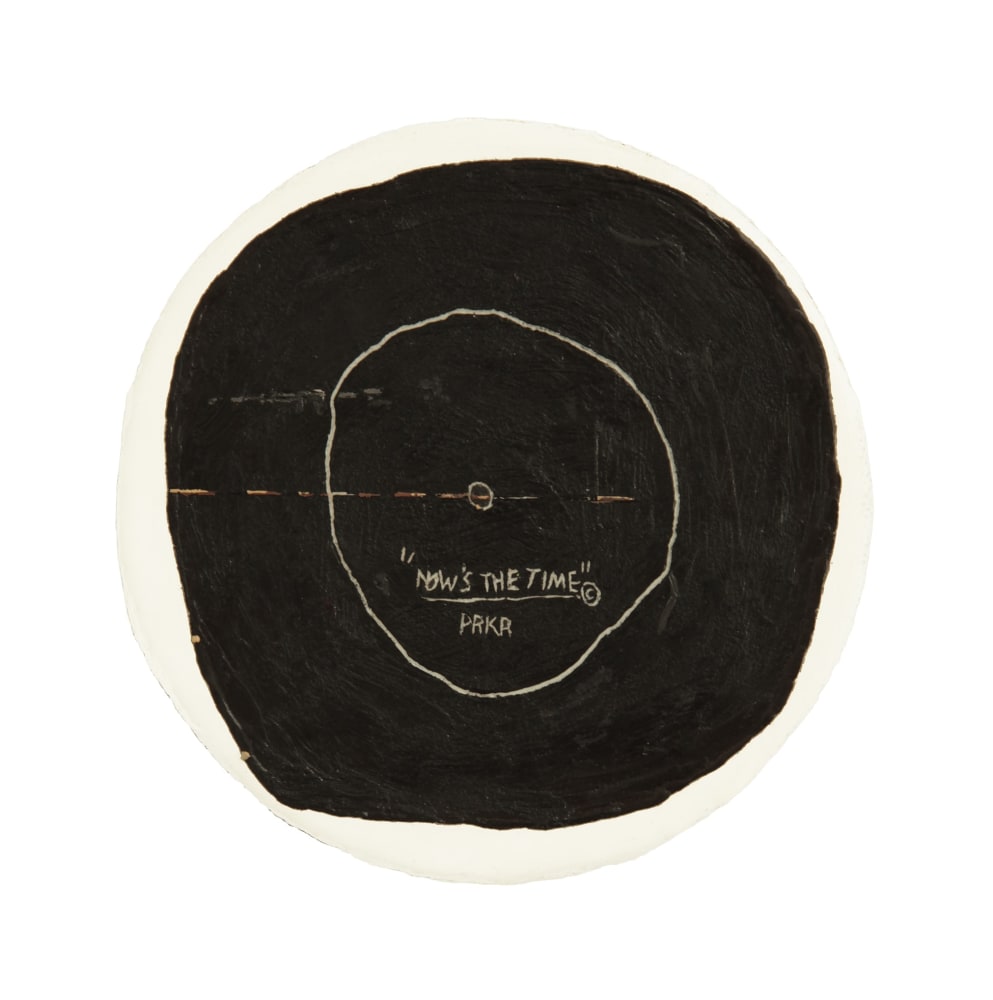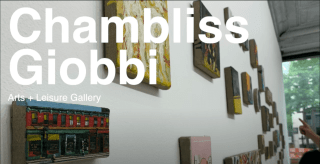CHAMBLISS GIOBBI
Renew-Re-Knew
May 22nd - June 20th, 2021
FOR IMMEDIATE RELEASE
Arts+Leisure is thrilled to announce Renew-Re-Knew, an exhibition of recent work by Chambliss Giobbi.
Does art carry a universal message? Yes and no. Some believe art always implies a kind of utopian prospect. For this reason, we need to shelter it away in museums, just as we need the police to protect our banks. Depending on where you go in the world, banks and museums may look eerily similar. Both are paid for by reluctant taxpayers, and the donations of the exceedingly rich. But suppose art isn’t utopian at all. What if it promises nothing other than itself, a congeries of historical trends, formal techniques, and personal ambitions? Looked at in this way, art would still have a haunting reality all its own, whether it promised anything or not. The irrepressible reality of art, something which is neither aura nor value, would shine through with the hallucinating clarity of a dream.
Chambliss Giobbi’s works are dreamcatchers. Less allusions than outright failures, his failures have an intrinsic, existential worth. Examining his artistry, one notes how he patiently recreates each canonical work from the standpoint of a viewer, even a diehard fan. He paints with melted Crayola crayons, painstakingly rebuilding his source materials from this most unmalleable of substances. And those who take the time to look at his works after the fact are transported to a place indifferent to hierarchies and values, where memory and desire intermingle.
Take, for instance, Giobbi's Clipping, which is modeled on a Stuart Davis’s 1951 painting Owh! in San Paõ. While Giobbi's work is jazzy and frenetic, Giobbi's cover version feels almost like bricolage, an assemblage of elements which don't necessarily belong together. On one level, the difference between the two paintings is a matter of intentionality. Davis was working from memory to recreate a coffee pot he once painted as a still life. When he made Owh! in San Paõ, he was both remaking a painting and recalling an original perception. Giobbi, on the other hand, is making a painting that resembles another painting. Similar to how a portrait painter creates a double of his or her sitter, Giobbi has recreated his subject in the best possible light.
What comes out of this process is less appropriation (did John Singer Sargent appropriate Madame X?) than a study in art’s irreducible uniqueness. At bottom, no artwork that Giobbi alludes to can be copied. Recreating them as he does, the viewer is confronted with aspects similar to those found in canonical works, but in a decontextualized way. There’s also a constructed quality to Giobbi’s results that would not be so apparent if he used more conventional materials, like oil or acrylic paints. Oftentimes, this laborious process underscores something in Giobbi's own work that the original only implied.
One such work, Corpuscle, is based on one of Chaïm Soutine’s paintings titled Carcass of Beef. While Giobbi’s ant-like carcass is rather humorous, the painting it’s modeled on exudes melancholy and hunger. The palette of Soutine’s famous painting is preserved; but its inspiration is wholly withdrawn from Giobbi’s remake. Soutine would fast before making a carcass painting, using his hunger to sharpen his perception of the meat, masochistically thirsting after a corpse he had to freshen with blood after preserving it in formaldehyde. The narrative underlying Giobbi’s painting about Soutine’s work is more like a collocation of various stories. Carcass of Beef is probably something Giobbi has seen in books, online, and in museums. While Soutine’s painting is about flesh, decomposition, and hunger, Giobbi’s work is more about portability, the transposition of images through media, and the recreation of the experience of art. One could say that Giobbi has “hacked" Soutine’s source code, creating something which borrows elements from Soutine’s painting but uses these elements as a vehicle toward a totally different artistic statement.
Reconstructing paintings—as opposed to their original subject-matter or inspiration—Giobbi’s works downplay originality while creating something which feels strangely familiar. That he has chosen these paintings to recreate (and, in effect, study) derives less from the application of any methodology or technique and more from the simple fact that these are works that he likes. Recasting them, recreating them in terms of different media, sizes, and shapes, only confirms that we're seeing a worn-over image of the first time. All of which is to say that Giobbi is a painter of contexts. Rather than fixating on the ostensible subject matter of the paintings he recreates, he recontextualizes his chosen themes in a way that highlights an archetypal presence: a voyeuristic specter, our own likeness, who peers out from behind the surface of canonical artworks.
Chambliss Giobbi utilizes the nature of time and simultaneity as a central theme in his fractured, stop-frame collaged images as well as his mutated sculptural Möbius Strips that perpetually return to their origin. Since 2019, he has been engaged in a long-term project of recreating iconic paintings from the 16th century to contemporary. These paintings are in extreme miniature and are painted with melted Crayola crayons.
Giobbi has exhibited in numerous museum and gallery group shows, including Arts+Leisure, the Hampden Gallery (Umass Amherst), Pavel Zoubok Gallery, 101/Exhibit (Los Angeles), National Portrait Gallery (D.C.), the Katonah Museum of Art (Katonah, NY), Artists Space (NYC), the Oakland University Art Museum (Detroit, MI), the Kohler Art Center (Sheboygan, WI), the National Academy Museum (NYC), the Islip Art Museum (Islip, NY). Permanent collections include the Alain Servais Collection in Brussels, The International Collage Center, the Museum de Arte Moderno y Contemporaneo in Santander, Spain.
His gallery exhibitions include Artists Space (NYC), VSOP Projects (Greenport, NY), 101/Exhibit (Los Angeles), MiTO Galeria d’Arte (Barcelona), HALLWALLS (Buffalo), and Jack The Pelican Presents (Brooklyn), among others. His work has been reviewed by the New York Times and has been featured in NYArts Magazine, ArtNet, Art Ltd. Bomb Magazine, SLEEK Magazine (Berlin), Le Mile Magazine, FlashArt online, and video-profiled on ArtInfo.com.
He has participated in numerous fairs and was featured in VOLTA NY in 2010. Cham’s solo sculptural project, Arcadia, was presented in three rooms at the Spring Break Art Show in 2018. Another solo project of a melted Crayola Crayon piece curated by Danielle Sweet, A Room With A View, was presented at the Spring Break Art Show in 2020. His solo exhibitions have included catalogues with essays by Mimi Thompson, John Massier, Walter Robinson, Dick Goody, and Christian Viveros-Faunè. He graduated with a BFA in classical music composition and theory from Boston University in 1986 and received NYFA, NEA, and Guggenheim Fellowships. He turned exclusively to visual art in 1999.
Chambliss lives and works in New York City.

